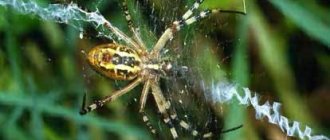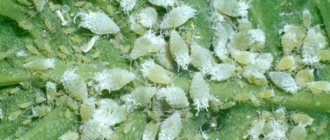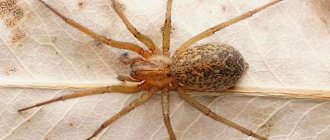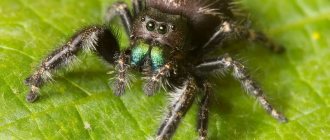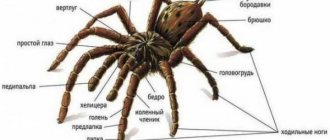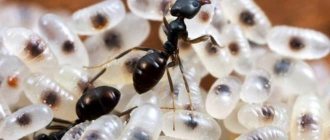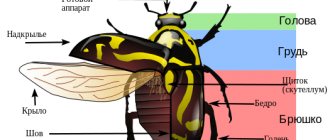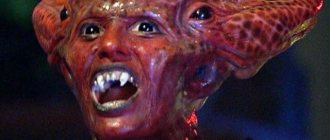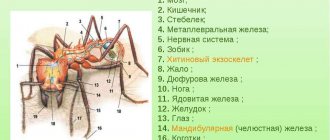From a scientific point of view, it is believed that spiders are animals that belong to the phylum of arthropods and the class of arachnids. On the planet you can find about 42 thousand species of spiders, including 1.1 thousand fossils. Spiders inhabit almost every corner of the globe. They can be found in conditions where no living creature can live. This type of predator feeds on insects, small animal species, and amphibians. Among the many varieties there are spiders that feed on the green parts of plants. The science that studies the life of spiders is called arachnology.
What is arachnology
Arachnology works closely with sciences such as veterinary medicine and medicine. Throughout their life, a person or animal encounters arachnids up to a thousand times. The outcome of such a meeting can be unpredictable, since arthropods can negatively affect the body of any living creature. In order to study such an effect and be able to neutralize the venom of an arachnid that has bitten a person, constant cooperation between these areas of knowledge is necessary. Many arachnids are sources of dangerous diseases, the cure for which is not so easy to find.
In recent decades, the science of Arachnology has been gaining rapid momentum and gaining popularity not only among scientists, but also among ordinary people interested in the world around them. Numerous magazines have appeared, filled with bright illustrations of arachnids and telling about their places of residence and habits. The world of arthropods has always aroused and will continue to arouse such interest. Studying its features and components will be useful for everyone. Documentary series about the life of spiders are of interest to people of any generation and status, which indicates the important role of arachnids in our lives.
Features of reproduction
During the process of active growth, spiders from time to time shed their tight shell, which consists of a chitinous structure. They gradually acquire a new, stronger one.
Over the entire period of their life, they can molt up to 10 times . Spiders are heterosexual individuals, with the female being much larger than the male.
The mating period lasts quite a long time, its season begins in mid-autumn and lasts until early spring. At this time, the male fills the bulbs, which are located at the ends of the pedipalps, with sperm, then he goes in search of the female.
After performing the “mating dance” and fertilization, the male leaves and dies in the subsequent period.
As soon as 2.5 months have passed, the female lays eggs. After 35 days, spiderlings hatch from them and live in the web until the first molt. Sexual maturity in females occurs at the age of 3-5 years.
How many spiders are there in the world
Nowadays, arachnologists around the world know about 70,000 species of arachnids. Many of these species are very rare, found only in certain parts of the world. Also, a huge number of species of farts have not yet been identified. Many ancient, unknown exhibits are gathering dust in museums, but their names still remain a mystery. Many varieties of spiders have survived unchanged since prehistoric times. This fact makes arachnids unique representatives of the fauna, because only very few species of animals and insects managed to overcome centuries of evolution in their original form.
Those spiders that we encounter in everyday life are not dangerous. They live in people's houses, in the grass, on trees and plants. Mostly we don't notice them, although we are often surrounded by them. So on one square meter of grass field in England there can be more than one hundred and fifty spiders. But there are spiders that pose a danger to human life, and if you don’t notice such a spider you can suffer very seriously. Deadly spiders live on all continents of the globe. If you find yourself in the habitat of such spiders, you should exercise extreme caution.
Class Arachnida
Class arachnids , unlike crustaceans, live mainly on land, breathe with the help of trachea and lungs. The class includes three orders, in whose representatives one can trace the process of fusion of body parts. Thus, in the order of spiders, the body is divided into the cephalothorax and abdomen; in scorpions, it consists of the cephalothorax, protomothorax, and posterior abdomen; in mites, all sections are fused into one shield.
General characteristics of arachnids: absence of antennae, four pairs of walking legs, tracheal or pulmonary respiration, permanent perioral appendages - upper tentacles and pedicles.
The cephalothorax contains four pairs of simple eyes, mouthparts, and limbs (walking legs). The most common are spiders and mites.
Spider Squad
A typical representative of the order of spiders is the cross spider. It can be found in forests, parks, on estates, in houses, where they weave large trapping nets from cobwebs. The spider has the first pair of mouthparts - the upper jaws, equipped with sharp, downward-curved claws.
At the end of the claws, the excretory ducts of the poisonous glands open.
The jaws serve the spider to kill prey and for protection. The second pair of mouthparts are the tentacles, with which the spider probes and turns the victim while eating.
Four pairs of jointed walking legs are covered with sensitive hairs. The abdomen of arachnids is larger than the cephalothorax. At the posterior end of the abdomen of spiders there are arachnoid warts into which the arachnoid glands open.
The substance secreted by the glands hardens in air, forming spider threads. Some glands secrete a cobweb that is strong and non-sticky, used to form the skeleton of a trapping net. Other glands secrete small sticky threads with which the spider builds a trapping web. The third glands secrete a soft, silky web used by the female to weave a cocoon.
The spider entangles the victim in the trapping net with a sticky web, plunges the claws of the upper jaws into the prey and injects into it a poisonous liquid that dissolves soft tissues and acts as digestive juice.
Leaving the victim shrouded in web, the spider moves aside, waiting for its contents to be digested. After some time, the spider absorbs the partially digested food. This is how spiders partially digest food outside the body.
The spider's respiratory organs are represented by pulmonary sacs communicating with the environment. In addition to them, the spider has tracheas in its abdomen - two bundles of respiratory tubes that open outward with a common respiratory opening.
The spider's circulatory system is basically the same as that of a crayfish.
The role of excretory organs is performed by the Malpighian vessels; the spider has one pair of them, but they branch.
The hemolymph (blood mixed with lymph) of the spider washes these vessels and metabolic products exit through the lumens, then enter the intestine and are then excreted.
The nervous system is formed by the subpharyngeal node, the brain, from which nerves extend to various organs.
Spiders have numerous and varied sense organs: organs of touch (hairs on the spider’s body and on the legs), smell and taste (on the legs and legs), taste organs are also present on the lateral parts of the pharynx; organs of vision (eight simple eyes).
Some spiders are able to distinguish color, especially those. which look for prey on plant flowers (crab spiders).
Spiders are dioecious animals. Females are larger than males. In autumn, the female weaves a cocoon from a web and lays eggs in it. The eggs overwinter in it, and in the spring they hatch into spiders. Most spiders are beneficial: many small mammals, birds, lizards, and some insects feed on them. Among the spiders there are also poisonous ones - tarantula and karakurt.
They are very dangerous for humans and pets.
Squad of pincers
In most representatives of the mite order, the body does not have a clear division into segments or sections. There are a lot of ticks. Some of them live in the soil, others in plants, animals and humans.
Unlike spiders, flares have an indirect development.
The egg hatches into a six-legged larva, which after the first moult appears a fourth pair of legs. After several molts, the larva turns into an adult.
The red spider mite settles on the leaves of cotton and other valuable plants. It reduces cotton yields and causes plant death.
The flour mite settles in onions and grains. By eating away the embryo of the future plant in the grain, it causes the death of the seeds.
It causes food spoilage in warehouses. for example, various cereals, baked goods, sunflower seeds. Cleanliness and ventilation of the premises where food is stored is one of the main measures to combat flour mites.
The scabies mite (itch) causes the disease scabies in humans.
Females of this type of mite penetrate into the more delicate areas of human skin and gnaw passages in it. This is where they lay their eggs.
Young flares emerge from them, again gnawing passages in the skin. Keeping your hands clean prevents this dangerous disease.
Taiga ticks are very dangerous parasites of humans and animals. When sucking blood, they can infect a person with a serious disease of the nervous system - encephalitis. Under natural conditions, the causative agent of encephalitis is found in the body of wild animals. The role of ticks in the transmission of encephalitis from wild animals to humans was discovered in the late 30s of the 20th century. E. I. Pavlovsky.
Why are poisonous spiders needed?
However, even poisonous spiders can be beneficial to humans. The venom of these spiders, which has no other analogue, is used in medicine. Various medicines are made from it to save people from seizures, poisoning, and, of course, from the bites of these same spiders. It is extremely difficult and dangerous to obtain such poison, so local residents are never involved in such work, and they do not even accept poison that has already been extracted from them. This is done in order to reduce the number of victims of spiders who may be tempted by the high cost of such substances. Basically, the poison is extracted in laboratory conditions using all means of protection.
What order and class do spiders belong to?
If we talk about what class spiders belong to, then this is the class “arachnids”. It stands apart from all others, which is associated with the characteristic features of the body structure of arthropods.
They have it divided into two parts - the abdomen and the cephalothorax, but in representatives of other classes the body has a slightly different structure.
There is another characteristic difference - the number of legs. Arthropods have 8 of them instead of 6. They have chelicerae, which are located on the front of the cephalothorax.
They also have pedipalps, which look like tentacles. They are located on the sides of the body and perform the same functions as the paws.
These organisms belong to the order Spiders, the family Arthropods. Spiders are often called "archans", this name comes from the name of the suborder to which these creatures belong - Orthognatha.
It is distinguished by species diversity and specific appearance.
This suborder includes spiders called mygalomorphs. The body of representatives of this species is completely covered with short hairs. They prefer to live in dungeons.
The group includes the following species:
- tarantulas;
- ctenises;
- funnel spiders;
- diggers.
Spider collections at the Zoo Museum
Indeed, in the 1880s the arachnological collections of the Zoo Museum were quite representative. Perhaps the only thing missing from them was the spiders of the Moscow province and central Russia in general, collections of which appeared about 10–15 years later, when P.R. Freyberg began arachnological research. But through the works of Bogdanov in 1872, collections of spiders from Europe (about 600 specimens, identified by L. Koch), as well as Australia and Oceania at the Godefroy Museum in Hamburg (about 220 specimens, also identified) were acquired in Vienna from V. S. Rosengauer Koch). These materials are still stored in the Zoo Museum.
Some exhibits from the Australian spider collection acquired from the Godefroy Trade Museum in Hamburg. Photo by A. V. Martynov
The history of the Godefroy Museum, founded by the Hamburg merchant, popularizer of science and philanthropist I. Ts. Godefroy and which existed in 1861–1879, has recently been described in detail []. The subject of trade were ethnographic and natural history collections, collected primarily on the Pacific islands. The company had its office on the island. Samoa, also used other trading posts. Cargo delivery was carried out by the trading house's ships "Elena", "Sophia", "Caesar Godefroy" and others. The curator of the trade museum in Hamburg from 1863 to 1882 (until the complete sale of the collections) was J. D. E. Schmelz. The museum had its own permanent exhibition, located on two floors: on the first - natural historical objects, on the second - ethnographic; now a significant part of the ethnographic materials is stored in the Ethnographic Museum of Leipzig, zoological - in the Zoological Museum of Hamburg. Lists of spiders and other objects for sale were published in special catalog brochures. That is why the labels of almost all jars with spiders stored in the Moscow State University Zoo Museum indicate the trade catalog number, the species name and the surname “Schmeltz” or “Schmeltz”. From a scientific point of view, it would be much more important to indicate the place where the material was collected - and one can only guess about it. This collection is described in the monograph “Spiders of Australia” (Koch L. Die Arachniden Australiens
), which was published in Nuremberg in a series of issues in 1871–1881. Due to deteriorating vision, Koch was unable to complete his work. In 1881–1890 E. Keyserling continued work on the monograph. In addition to Australia, this collection also includes spiders from a number of islands in Oceania. The main part of the collection is kept in Hamburg, in the Moscow museum - mostly duplicates.
Spiders collected by the Turkestan expedition of A.P. Fedchenko and identified by A.I. Kroneberg. Photo by A. V. Martynov
The largest of the other Moscow collections of spiders of that time is the so-called Turkestan collection of A.P. Fedchenko, collected in the late 1860s - early 1870s, processed by A.I. Kroneberg and published as a separate issue in a series of scientific results of Fedchenko's expedition [ ]. The volume of the collection is about 1200 copies. and includes standard series of 30 species. The collection was considered lost for many years and was introduced into scientific circulation by arachnologist A. B. Nenilin in the early 1980s. The history of the publication of the results of Fedchenko’s expedition [] in a series of works by the Society of Lovers of Natural History, Anthropology and Ethnography, of which he was one of the founders, is interesting. The first issues were printed using public funds, which quickly dried up. Then, through the efforts of the widow and many other people, it was possible to secure the assistance of the Governor-General of the Turkestan Territory K.P. Kaufman, who had previously actively helped Fedchenko on his trips. After receiving positive feedback from the Academy of Sciences in St. Petersburg, he requested funds directly from the Russian Ministry of Finance. And the money was allocated. As a result, a series entitled “Journey to Turkestan by A.P. Fedchenko” was published until 1902. In his work, Wagner expresses gratitude to Kroneberg for putting at his disposal an outstanding collection of spiders
[, s. 125].
Here is what Bogdanov wrote about obtaining collections for the Zoo Museum:
“Thus, the Polytechnic Exhibition of 1872 enriched the Museum with collections collected by Fedchenko in Turkestan... The exhibition committee spent a large sum, up to 10,000 rubles, on the acquisition of the collection of helminths of Professor von Siebold, the biological collection and the collection of insects of Rosengauer, various collections purchased from Godefroy in Hamburg , and, finally, Professor Semper’s collection of sea cucumbers” [, p. 41].
In those same years, the arachnological collections of the Zoological Museum of the Academy of Sciences in St. Petersburg (now the Zoological Institute of the Russian Academy of Sciences) were formed according to a different principle. There, materials from long-distance expeditions were sent abroad for identification, first of all to W. Kulczynski in Krakow (then located in Austria-Hungary) and later to E. Simon in Paris. The returned certain fees formed the basis of the stock collection of this Zoo Museum. Unfortunately, not all materials were sent abroad for identification, so the collection still contains huge jars of spiders collected at the beginning of the 20th century. The Moscow Zoo Museum did not send its collections of spiders abroad, and our Russian specialists did not have time to process everything, and we still have unpacked materials from the Trans-Caspian expedition of 1885 by N.V. Nasonov (collected before he became an academician and director of the Zoo Museum in St. Petersburg). This is how the biographies of scientists, museums and individual collections are intricately intertwined.
Classification of spiders and habitat
Spiders belong to the biological kingdom Animalia. Animals mean multicellular eukaryotic organisms that consume organic food, breathe oxygen and are capable of movement (not counting individual representatives).
Arachnids are one of the most famous species of the arachnid class. As of November 2015, at least 45,000 species and 113 families have been recorded by toxonamists. The order Spiders includes 2 suborders Mesothelae and Opisthothelae. The latter includes 2 infraorders: araneomorphic and mygalomorphic.
- Mesothelae (arthothiomorphs or lyphistiomorphs) is a suborder containing one living family Liphistiidae and a number of extinct ones. The group includes about 90 extant species. The arthroplasty is medium-sized, 8-23 mm in length. They are characterized by downward-pointing, dagger-like chelicerae, as well as segmented rows of plates on the upper surface of the abdomen. They are active and live for many years. Representatives of the family are common in Myanmar, Thailand, and the Malay Peninsula. Found in Vietnam, the eastern provinces of China and southern Japan.
- Opisthothelae. They differ from lyphistiomorphous spiders in their more primitive characteristics. Opisthotelians lack tergite plates and ganglia in the abdominal cavity. In Opisthothelae the spinning cells are located at the edge, while in mesothelae they are located in the middle.
- Arneomorphs or labidochnaths are an order of arachnids that differ in the position of their fangs. They lean toward each other and intersect in a pinching action. Arneomorphs are common in countries with temperate climates.
- Mygalomorphs are characterized by a parallel arrangement of the jaws, which, when compressed, bend under the basal segment. The infraorder includes the largest representatives of the class, found in the tropics, subtropics, and southern and western regions of the United States.
History of the study
Spiders were known to ancient scientists, in whose works there are many references to these animals and observations of their life. Thus, Aristotle talks about spiders catching prey, tries to explain the function of arachnoid warts and the construction of snares, mentions mating, and notes that it occurs with the abdomen deflected in different directions, and, finally, describes the hatching of juveniles from eggs and molting. In Aristotle's system, spiders are classified, along with some other arthropods and worms, in the genus Entoma - “segmented animals with many legs,” which in turn belong to the large group of “animals without blood.”The information about spiders found in the authors of the Middle Ages represents an uncritical retelling of Aristotle. Only in the middle of the 17th century did the first independent, although not entirely correct, observations of Guillaume Pison (Pison, 1658) appear on the life of South American tarantulas, but they also bore a significant imprint of the influences of Aristotle. Soon Lister (1678) published his own studies on the structure and ecology of spiders in England and for the first time noted the role of male pedipalps during mating.
Linnaeus, in his Systema Naturae (Linne, 1735), united spiders into one genus Araneus, classifying it, along with all other arthropods, in the class Insecta. However, Clerck (1757) already considered spiders as a special group different from insects; he also described many species, studied their morphology and ecology. The first division into genera was introduced by Latreille in 1804 (Latreille, 1804), and he left the generic name Araneus for the cross spider, and united all spiders into the family Araneides of the arachnid class, which by this time had already been established by Lamarck (Lamarck, 1801) . After the renaming of the cross spider from Araneus to Epeira (Walckener, 1806), the old name Araneides (or in another transcription - Araneida), which means “similar to Araneus”, lost its meaning. Therefore, a new name for the order was proposed (Sundevall, 1833), Areneae. However, in 1948, at the International Zoological Congress in Paris, the priority of Clerc, who called spiders Aranei back in 1757, was restored.
In the 18th century, in addition to the works of Linnaeus and Clerc, the works of Reaumur (1742), Albin (1736) and De Geer (1752-1778) were of particular importance. Reaumur was the first to study the anatomy of spiders, and the last two authors gave a number of important information on their biology and described European species.
The heyday of the systematic study of spiders began at the beginning of the 19th century with the studies of Latreille (1804) and Walkener (1806). The foundations of modern araneology were, however, laid later by the works of Thorel, Menge, Simon, V. Kulchinsky and Picard-Cambridge. Thorell (1869-1870) was the first to consistently apply Clerk's nomenclature and gave a summary of all European species known at that time. Menge (1866-1879), having published a major monograph, laid the foundations for the taxonomy of spiders based on the structure of the copulatory apparatus of males and females. Simon’s summary “Histoire naturelle des Araignees,” which was published in its first edition a hundred years ago, was also of great importance (Simon, 1864). V. Kulczynski in the 80s of the last century (Kulczynski, 1882, 1885) gave a number of very valuable works on taxonomy.
In Russia, one of the first systematic descriptions was made by E. Laxmann (Laxmann, 1770). Brief information about some characteristic representatives of the spider fauna in Russia was given by P. Pallas (Pallas, 1773), S. Gmelin (1785) and I. Lepekhin (1795), but the first specifically systematic work belongs to I. Krynicki (1837). Subsequently, V. Kulchinsky, V. Mochulsky, E. Eichwald, K. Kessler, Y. Simashko, V. Tachanovsky, V. Reinhard, V. Wagner, P. Schmidt, E. Verzhbitsky, D. Fedotov, N. Grese, N. Lukyanov, D. Kharitonov, S. Spassky,
B. Ermolaev, V. Sychevskaya, O. Goltsmayer and many others.
S. Spassky (1925), for example, published a key to spiders of the Don region. The works of D. Kharitonov (1928-1954), including his catalog of all Russian spiders known by 1930 (1932), were of great importance for the development of araneology in the USSR.
Westring, K. Koch, L. Koch, Genz, McCool, Dahl, Reimozer, Petrunkevich, Fazh, Berlan, Mello-Leitao, Revere, who compiled a multi-volume catalog of spiders known before 1940, worked abroad on taxonomy and faunistics. (Roewer, 1942-1954) and many others.
The first work on anatomy, after Reaumur, belongs to Treviranus (Treviranus, 1812). Then the studies of the Frenchmen Duges (1835) and Blanchard (Blanchard, 1849) appeared, devoted to the morphology of the respiratory organs and circulatory system. During the same period, the works of Russian zoologists I. Brandt (Brandt, 1840) were published - on the anatomy of the cross spider and the “house spider” (Tegenaria) and K. Kessler (Kessler, 1849) and N. Wagner (1868) - on the anatomy of the tarantula . Later, the number of anatomical works increases rapidly. Bertkau, Dahl, Pelsener, L. Schneider, P. Mitrofanov, V. Shimkevich, Apstein, Pocock, Warburton, Kozar, Lamy, Widman, Buxton, Petrunkevich, Ganstrem, Scheuring, Vogel, Kestner, Millo, P took part in the study of morphology Marikovsky, A. Ivanov and many others. Of particular importance were the works of V. Shimkevich on the anatomy of the cross spider (Schimkewitsch, 1884) and his discovery of the internal skeleton of a mesodermal nature in arachnids (1893), as well as the work of Apstein (1889), who described the arachnoid apparatus of Araneus. The anatomical and histological study of copulatory organs, essentially begun by W. Wagner (1886), was continued by Engelhart, Gerhardt, Osterloh, Garm and P. Marikowski.
Among the latest anatomical works, the studies of Petrunkevich (1933) on the circulatory system and segmentation, Buxton (1913) on the coxal glands, Hanström (Hanstrom, 1919, 1935) on the histology of the brain, and, finally, Kästner and Millo are of interest. The last two authors examined a wide variety of organ systems. Interesting are the works of Millot (1931c, 1933, 1936a) on the segmental composition of the abdomen of spiders and on the anatomy of primitive Liphistiomorphae, which have a segmented abdomen. The first representative of this group, Liphistius desultor, was found back in 1849 in Penang, and very few arachnids have ever caused as much controversy and discussion as this species.
In understanding the architectural composition of the body of spiders, as well as all chelicerates in general, a large role belongs to the theory of primary heteronomy of segmented animals by the largest Soviet embryologist P. Ivanov, and his work on the embryology of the horseshoe crab Limulus (Iwanoff, 1933) is of particular importance.
Many authors have worked on the physiology of spiders. A number of physiological observations related to molting were made by W. Wagner (Wagner, 1888). The founder of the experimental method for studying the excretory system in invertebrates, A. Kowalewsky (Kowalewsky, 1892), studied excretion. V. Fausek (1909) supplemented these works with observations on the deposition of guanine. In modern times, Dahl, Rabo, Homan, Balzer and his student Petere, Palmgren and others worked on physiology.
The first work on embryology, owned by Herold, appeared in the first half of the last century (Herold, 1824); because of the time it was an accurate study. But the works of Claparede (1862) and V. Zalensky (1871) were of main importance. The latter discovered the germ layers in spiders, found the gastric invagination and established the homology of the lungs and arachnoid warts with the abdominal limbs. Then Balfour (1880) was the first to use the sectioning technique to study the embryology of spiders. In the eighties and nineties, the studies of Losy (Locy, 1886), V. Shimkevich (1887), Y. Morin (1888), Pereel (Purcell, 1895), A. Yavorovsky (Jaworowski, 1896) were of particular importance. At the beginning of our century, Papenheim, Welshtab, Kautsch, Montgomery, and Hamburger worked. The Shimkevich couple (1911) were the first to study the embryonic development of four-legged spiders (Mygalomorphae). Among the new works, the studies of Millo (1931 c), Kaestner (Kaestner, 1937) on the metamerism of the abdomen and internal organs of the abdomen of the postembryonic stages, as well as Holm (1940, 1952) on embryogenesis and postembryonic development are of great interest. Spermatogenesis was studied by J. Wagner (1896), Bezenberg (Bosenberg, 1905), I. Sokolov (1960) and others. The study of molting began with W. Wagner (1888), who focused on both the morphological and ecological sides of this process. In recent years, Bonnet (1930) and Browning (1942) have worked on molting. The study of regeneration was also started by W. Wagner (1887) and then continued by E. Schultz (Schultz, 1898), and more recently by Bonnet (1930). Autotomy was studied by Wood (1926). Numerous observations on the biology and behavior of spiders are scattered in the systematic works of older authors, especially Latreille, Walkener, Simon, Blackwall, Westring and others. Clerc (1757) and Latreille (1804) attached great systematic importance to the way of life of spiders and made it the basis of their classification. Menge (1843) was the first to observe the process of filling the male pedipalpal copulatory organs with sperm. In Russia, the first information on the biology of spiders appeared very early, namely in the works of P. Pallas (1773), S. Gmelin (1785) and I. Lepekhin (1795). Then, in the 19th century, the biology of spiders was studied by K. Kessler (1861, 1865), V. Tripolsky (1864-1865), N. Wagner (1868), V. Yakovlev (1872), F. Köppen (Köppen, 1881), L Krulikowski (1892).
However, all these observations were random, and their interpretation usually bore a strong imprint of anthropomorphism. The foundations of a genuine scientific comparative study of the behavior and instincts of spiders were laid by V. Wagner, introducing a new objective method into zoopsychology. From a number of his classic studies, two large works are devoted specifically to spiders - “L'industrie des Araneina” (1894) and “The Water Spider” (1901a). In the 20th century, Dahl, Comstock, Reimoser, Wiele, Bristow, Savory, Berlant, Fage Bonnet, Balzer, Gerhardt, Meyer, Nielsen, Palmgren and many others worked on the biology of spiders. Wiehle (1927, 1931, 1949, 1954) and Bristowe (1930), for example, conducted comparative studies of snares and nests, and Gerhardt (1928) - the biology of reproduction. In the USSR in recent years, S. Spassky (1920, 1935, 1958), V. Sychevskaya (1935, 1945), A. Utochkin (1956) and especially P. Marikovsky (1946, 1951, 1956) worked on the biology of spiders.
Paleontological research on spiders belongs to L. Koch, Skuder, Romer, Pocock, Pruvost, Petrunkevich, Hirst, Bristow and others.
On issues related to the practical significance of spiders, Russian researchers include V. Mochulsky, V. Tripolsky, F. Keppen, A. Shcherbin, K. Rossikov, S. Konstansov, E. Pavlovsky, D. Kharitonov and P. Marikovsky, and abroad - Bartels, Cobert, Bord, Sachs, Ensworth, Fisali, Berlan and Vellar.
General characteristics of science
Arachnology emerged as an independent science in the 19th century, and previously was part of entomology, which was a big mistake, since insects and arachnids belong not only to different classes, but also to subtypes. Taking this into account, arachnology can in no way be considered a subsidiary branch of entomology. However, the methods of these two sciences are very similar. In educational institutions, arachnology is still one of the areas of the department of entomology, and not of invertebrate zoology.
Modern literature on arachnology includes catalogs of the world fauna of arachnids, articles, journals and scientific publications. There are relatively few textbooks devoted only to arachnology.
